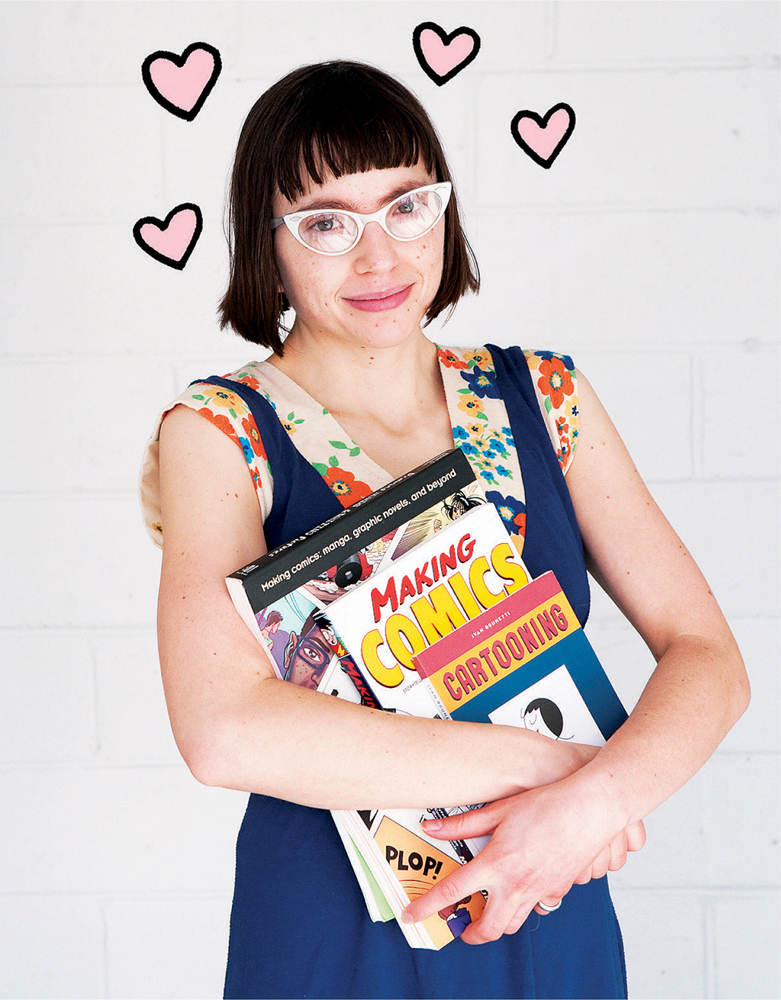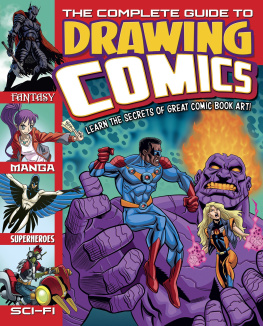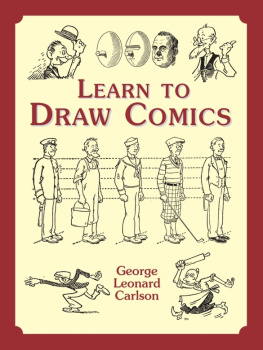About This Book

IF YOU WANT TO BE A STUDENT of the comics medium (and if youre reading this, Im guessing you do), then youre living in a good age. There has never been a better time to learn how to make comics. Today there are about a half-dozen colleges in the United States where you can earn a degree in cartooning, and there are several more where you can enroll in a class or a course of study. For the do-it-yourself student, there are even more optionsin the past decade the publishing market has been flooded with instructional cartooning booksand look, heres one more! Many, perhaps most, of these books have a fairly superficial approach to cartooning, treating it as a drawing style instead of the unique storytelling medium that it is. This is nothing new; its how the art world has considered comics for years (if it bothered to consider it at all). There are two books that were early exceptions that I must call out. They are Will Eisners 1985 Comics and Sequential Art and Scott McClouds 1993 Understanding Comics. These books were truly innovative because they werent about how to draw comics, but how to think about comics. I have tried to incorporate some of this approach. Although this book is titled Drawing Comics Lab, its as much about thinking, design, and writing as it is about drawing.
The exercises in this book are meant to jump-start your creativity and guide you toward effective ways to tell stories visually. Ive had the good fortune to be student, peer, and friend to many remarkable cartoonists over the years. Theyve taught me a lot, and Ive patched it together into this book.
I offer this book as a starting point for exploration; it is not meant to be a treatise on the entire comics medium. If you are looking for a complete, all-in-one course in cartooning, I can recommend two books: Making Comics by Scott McCloud and Drawing Words and Writing Pictures by Jessica Abel and Matt Madden. As I wrote this book I found these tomes invaluable. Ivan Brunettis Cartooning: Philosophy and Practice is a brilliant book and I highly recommend it for the more advanced cartoonist. Brunettis sophisticated insights and deeply felt truths might be a bit much for a complete novice (though a clever college student might take to it easily).
There is a lot of knowledge and a healthy dose of love in each of these books. I offer my endorsement and hearty thanks to each of the authors.
What We Mean When We Say Comics
Its nearly a prerequisite for an instructional cartooning book to spend a page or two defining what exactly a comic isnow its my turn to give it a shot. Defining comics isnt easy. The terms we use are often misnomers that are misleading and misused. Heres a fun experiment: tell a new acquaintance that you are a cartoonist. Nine times out of ten, youll have to spend a few minutes explaining what exactly that means.
And the truth is, there are no hard definitions that we all can agree on. Scott McCloud defines comics as juxtaposed pictorial images in a deliberate sequence. Will Eisner preferred the term sequential art. For me, the best definition I can come up with is this: when you put one picture next to another and a story happens, thats comics.
Its important to understand that when I use the word comics, Im talking about the medium of comics. So when you come the across uncomfortable subject-verb paring of comics is instead of comics are, know that a lazy copy editor is not to blame. Like Scott McCloud, I use the word comics to describe the art form, not the plural form of comic book.
Within the medium of comics there are several different formats. Comic books are comics in pamphlet form, like (but not limited to) the superhero comics you can find at a comic book store. Comic strips are short-form serialized comics, like (but not limited to) the humor comics you can find in the newspaper or online. There is a lot of contention about what exactly a graphic novel is, but put simply it is a novel-length comic. Thankfully, you can find them just about everywhere these days: in bookstores, in libraries, and even on the New York Times best sellers list. These formats are all variations of the same big idea: putting one picture next to another to make a story happen.
I use the word cartoonist to describe a person who makes comics. Its what I prefer to call myself, and most of my peers share this preference. Some choose to call themselves comics artists, but that might suggest that they only draw comics, and dont write them. Some prefer the lofty title of graphic novelist, which is fine if what you truly are making are novel-length comics. Cartoonist works for meits an all-encompassing term that is comfortably honest and humble.
Now that were all on the same page, lets stop quibbling about semantics and actually make some comics!

On the left, Torrential by Jonathan Bennett is a handmade minicomic measuring only 3 inches tall. On the right, Comix 2000, published by LAssociation, is a dictionary-sized anthology with 2,000 pages of comics. Though they come in different packages, theyre both comics.

Basic Supplies
One of the great things about cartooning is it doesnt take much to get started. The art supplies are simple and relatively cheap. In theory, you could make a comic using the everyday office supplies you have lying around the houseArt Speigelmans Maus was drawn with a fountain pen and typewriter paper, after all. You dont want low-quality art supplies working against you, however. Here is a basic list of tried-and-true tools that youll likely find useful as a cartoonist. We will go into these tools in greater detail in Unit 4.
Sketchbook (A)
Any kind is finea fancy hardcover journal or a cheap sketchpad will work. Pick one youll feel comfortable drawing in and that you can take with you wherever you go.
Copy Paper (B)
Many of these exercises start with doodles, and theres no reason to use fancy paper for that. Buy a ream of cheap letter-size paper that is designed for a photocopy machine, and keep it handy.
Drawing Pencils (C)
Pencils come with graphite in different degrees of hardness, with 9H being very hard and light, and 9B being very soft and dark. Youll probably want a pencil in the H spectrum (a 2H is my personal favorite).
Erasers (D)
A white plastic eraser is best for comics pages. Pink erasers are good, too, though a little more abrasive.
Rulers (E)
A T-square is essential. Look for a high-quality aluminum one that is at least 15 inches (38 cm) long. A clear plastic ruler will come in handy, too.












